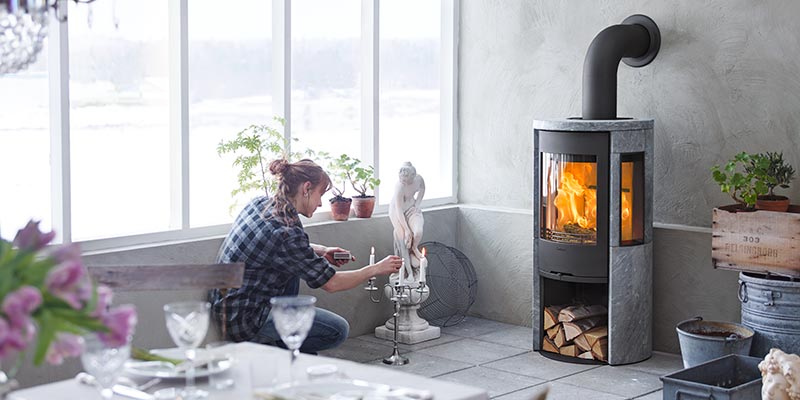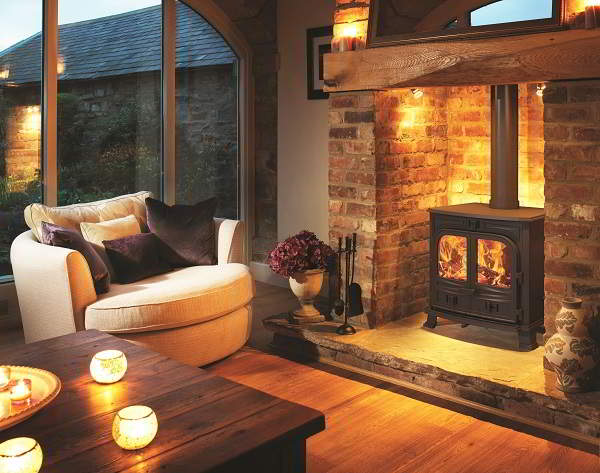The efficiency of a wood-burning stove is a very useful indicator as to how much fuel will be used and how much will be “wasted”. For the modern day stove we see figures approaching 80% and while these do give an indication of an efficient machine how do they actually calculate the efficiency of a wood-burning stove?
Calculating the efficiency rating
First of all it is vital that you do not confuse the heat output figure, which is quoted in kilowatts, against the efficiency rating which is quoted in percentage terms. These are two very different figures as the heat output figure takes into account the lowest and the highest output from the machine.

What does an efficiency rating show?
In the most basic terms, the efficiency rating of the stove indicates how much of the heat and fuel is “wasted” by going straight up the flue pipe. If we give you an example, a stove with an efficiency rating of 80% loses 20% of the heat and fuel in the combustion process. In order to compare and contrast, an open fireplace has an efficiency rating of around 30% which means that 70% of the energy is lost. So, on that basis stoves are way more efficient than their fireplace counterparts.
Testing stoves
Stoves in the UK are tested against British and European standards and while there is considerable flexibility with regards to the circumstances of each test they do give a useful indicator. For the record it is worth noting that there is flexibility on:-
The heat output at which the test will be carried out
The amount of fuel being burned during the test
How often the stove is refuelled – although it is no less than every 45 minutes
The actual process is straightforward; the appointed tester will measure the temperature and carbon content of the flue gases. As the amount of fuel added to the machine is precise, these three elements are used to calculate the amount of heat and fuel which has been waste (i.e. not been retained within the stove) hence the efficiency calculation.
Different measurement criteria
As we touched on above, there are certain elements of the efficiency rating test which can vary from stove manufacturers to stove manufacture. In some circumstances this can make comparisons between stoves manufactured by different companies not worthless but a little less meaningful. It is also worth noting that during the testing period the air supply (impacted using the stove vents) can also be manipulated although this is perfectly within the rules. In theory it is therefore possible for stove manufacturers to “hit” a certain level of efficiency by using their own settings within the measurement process protocol. However, their machines still need to hit this level, so they are true readings.

Summary
The calculation of lost heat and lost fuel through the flue pipe is relatively easy to calculate assuming a precise measurement of the fuel added to the stove has been taken. The fact that the environment in which the tests are carried out can and does vary from company to company can make direct comparisons between different stoves manufactures difficult although this figure is still a useful indicator of efficiency.

